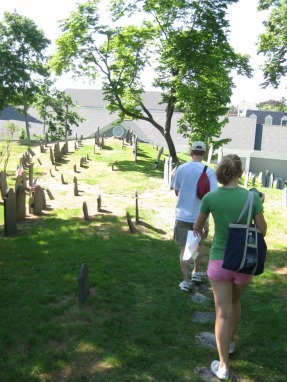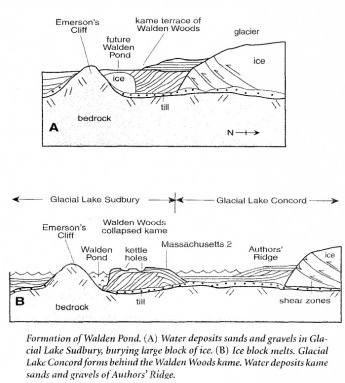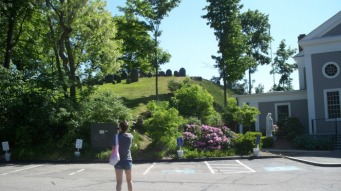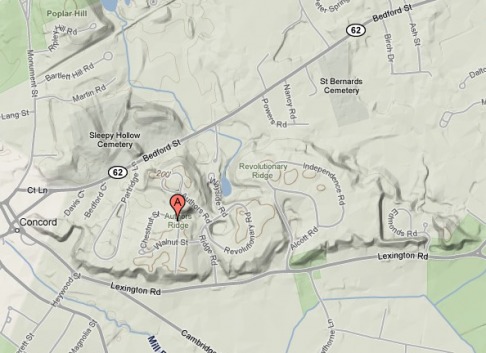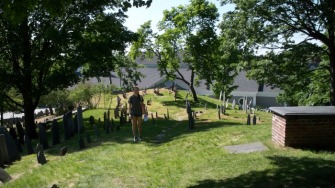Geology of Middlesex County
AUTHOR'S RIDGE, CONCORD MA
The ridge that runs along Lexington Rd in downtown Concord, Author's Ridge, was formed by glaciers when the Laurentide Ice Sheet began to retreat around 20,000 years ago. The ridge is called a kame delta, or an ice contact head, and helps explain the existence of Glacial Lake Concord and Glacial Lake Sudbury.
HOW IT WAS FORMED
A kame delta is a mound of sand and gravel that is created in contact with glacier ice (ice contact head.) The kame delta is formed when streams running through the glacier deposit sand and gravel when it comes in contact with a glacial lake.
Rivers flowing into Glacial Lake Sudbury from the melting glacier created large deposits of sand and gravel. After the kame delta of Walden Pond had developed, the ice began to recede more and the Walden kame became a small dam that began to form another glacial lake, Glacial Lake Concord. Another kame delta was formed from this lake, and it now forms Author's Ridge in Concord.
Rivers flowing into Glacial Lake Sudbury from the melting glacier created large deposits of sand and gravel. After the kame delta of Walden Pond had developed, the ice began to recede more and the Walden kame became a small dam that began to form another glacial lake, Glacial Lake Concord. Another kame delta was formed from this lake, and it now forms Author's Ridge in Concord.
Orientation and Relationship to Glacial Lake Concord and Sudbury
Author's Ridge is a kame delta that formed at the snout of a glacier while it was retreating. The google maps screencap shows that if the location of Author's ridge is where the terminus of the retreating glacier once was, then the glacier was retreating towards the north.
Glacial Lake Concord formed Author's Ridge when it came in contact with the retreating glacier. Author's Ridge began to dam the lake and prevented it from overflowing its banks.
Glacial Lake Concord formed Author's Ridge when it came in contact with the retreating glacier. Author's Ridge began to dam the lake and prevented it from overflowing its banks.
